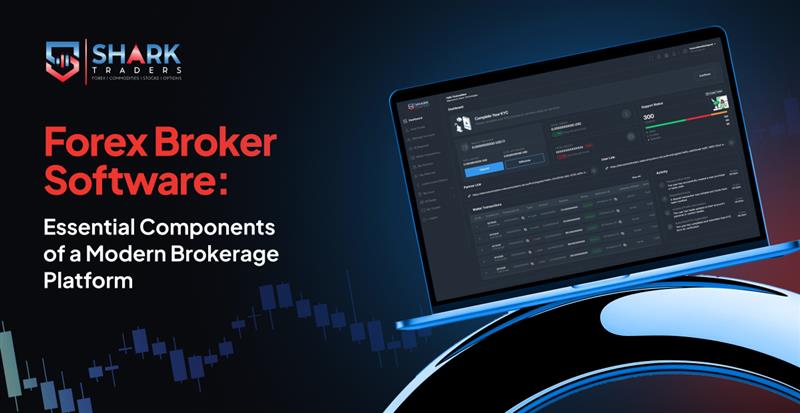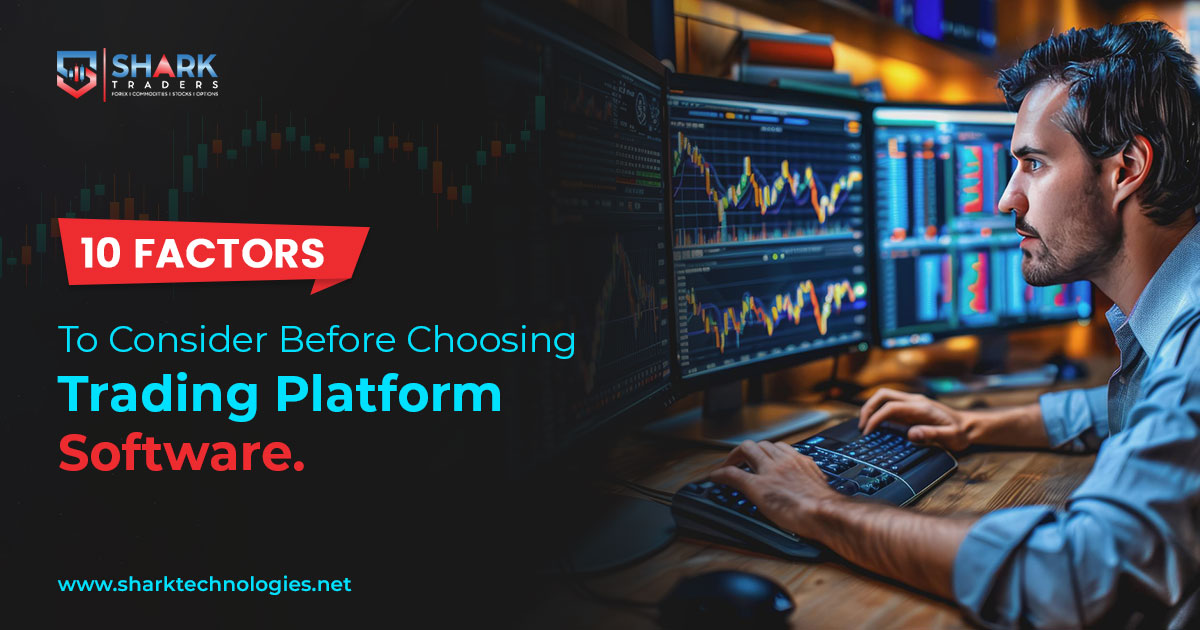Running a forex brokerage is simply impossible without reliable forex brokerage software. While most confuse it with just trading software, it actually goes far beyond that.
Of course, the Brokerage Platform includes the trading system that allows traders and investors to participate in the financial markets. However, it also includes all of the necessary tools and infrastructure for managing business operations. Furthermore, as technology advances, modern brokerage platforms even open up incredible opportunities for traders, investors, brokerages, and financial institutions.
If you are just starting a forex brokerage and need insights into the technical infrastructure, this article will help you with this. We’ll look at the key components of modern forex broker software and how they contribute to increased operational efficiency and better trading experiences.
Trading Software
A trading platform is the most essential component of modern brokerage platforms. It acts as the primary interface that connects users to global financial markets, including forex, commodities, indices, stocks, and cryptocurrencies. Thus, traders and investors can analyze market data and execute orders using different trading strategies across financial markets.
A trading software is accessible through desktops, laptops, mobile devices, and even tablets. It consists of various charting tools that convert complex market data into graphical charts, allowing users to quickly identify and capitalize on trading opportunities. The platform also includes news feeds, real-time quotes, social trading tools, economic calendars, customizable dashboards, and much more. It eventually aims to equip the brokers to assist not only the professional and institutional traders but also those just getting into forex trading.
Liquidity Aggregation and Market Connectivity
Trading software doesn’t just execute trades; it also relies on liquidity to ensure assets can be bought and sold smoothly with minimal slippage. An FX Broker Software carries liquidity aggregation by actually aggregating multiple price feeds from different liquidity providers to create deep liquidity pools and tight spreads.
Essentially, it works as follows: when traders place an order using the trading software, it is routed to relevant liquidity counterparties, such as multiple liquidity providers (LPs), banks, or prime brokers. These counterparties contribute to maintaining a stable and efficient trading environment.
Thus, brokerages act as intermediaries between traders and liquidity providers that coordinate the flow of orders and execution. FX brokers can employ different execution models, including Straight Through Processing (STP), Electronic Communication Network (ECN), or hybrid models for order execution
CRM Systems
Customer Relationship Management (CRM) systems are designed to manage client interactions as well as various brokerage operations. These systems serve as the central hub for forex brokerage infrastructure that assists brokerages in simplifying and automating their operational processes.
As it is mandatory for the Forex brokers to comply with KYC (Know Your Customer) and AML (Anti-Money Laundering) and other protocols. CRM systems help with that by managing the client onboarding process and automating KYC/AML checks. The whole system makes the process easier for brokers and traders by verifying IDs and securely storing documents.
CRM systems also include advanced tools for tracking leads, monitoring trader behavior, and effectively segmenting user data. It aims to lower the administrative burden from brokerage and even reduce errors and improve efficiency in operations.
Risk Management Tools
Despite their potential for large returns, financial markets are intrinsically risky. That’s why Forex Broker Software is fitted with risk management tools to protect the funds and data of both brokerages and traders. The latest automated monitoring systems are so highly sophisticated that they allow brokers to maintain a balanced risk profile. It helps to avoid losses that often occur when traders overextend themselves.
Some of the key tools used in risk management include real-time exposure monitoring, A-Book/B-Book toggling, trader profiling, and liquidity provider performance reporting. These risk management systems definitely protect brokerages’ operations but also avoid unusual activities and ensure adherence to evolving regulatory requirements. Not to forget, they instill trust among the users that the brokerage takes the security of the platform seriously by maintaining a secure trading environment.
Multi-Level Introducing Broker (IB) and Affiliate System
An affiliate system is necessary for brokerages that wish to actually grow by attracting new clients and increasing traded volumes on platforms. The FX Broker Software supports multi-tier partner programs and includes partner dashboards for tracking commissions, leads, and conversion rates.
Brokerages can easily set up multi-level commission structures with robust IB and affiliate tools. These tools automate partner payments, ensuring they are timely and accurate, and even distribute rewards for meeting targets.
Payment Processing Modules
In order to actually use the trading platform, users need to deposit and withdraw funds. That’s why an FX brokerage platform integrates with various Payment Service Providers (PSPs) to offer diverse payment options. These include credit/debit card processing, bank wire integration, e-wallets, crypto deposits and withdrawals, and more. All transactions are fully encrypted and compliant with industry-standard and regulatory protocols. It maintains both the safety and legitimacy of every transaction.
Modern FX broker software enhances the functionality for platform users with advanced billing modules that also allow expense tracking and creating invoices. Calculating payout reimbursements for IB partners and affiliates is one heck of a task for brokerages. These billing modules simplify the process by creating automated payout reimbursements.
Conclusion
Modern forex broker software is a multi-layered ecosystem that integrates trading platforms, liquidity providers, risk systems, compliance modules, payment processing tools, and more. The whole Modern Brokerage platform allows brokerages to improve efficiency, integrate automation, and ensure compliance.
Shark Technologies provides white-label forex brokerage platforms using the latest tools and technologies that assist brokerages in meeting the needs of their clients while also focusing on business growth. Our platforms feature powerful risk management software, automated compliance tools, multiple payment gateway integrations, and adherence to high cybersecurity standards. Get in touch with us to learn how we can support the growth of your brokerage.
Also Read :Why Forex CRMs Are the Backbone of Successful Brokerage in 2025 ?





